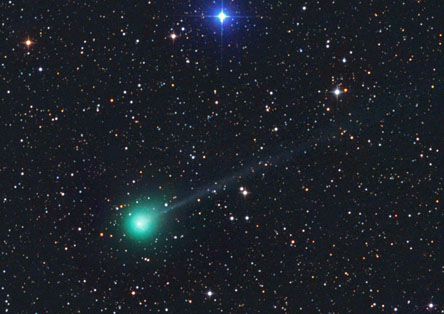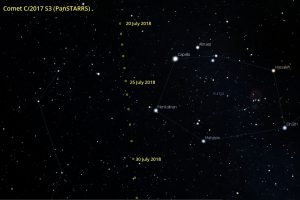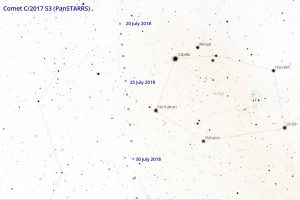
On 30 June Comet PanSTARRS 2017 S3 caught astronomers attention as the ball of ice and dust endured an outburst resulting in a jump in magnitude from 12.5 to 9.5. As a result, the comet’s tail became more prominent emitting the classic green colour that comet observers are used to. Over the next few of days, the eruption (and brightness) had faded.
Around July 14, the comet was at it again. Austrian comet astrophotographer Michael Jäger took the above image of the comet showing another jump in magnitude and tail prominence. Over the past year it has always been speculated that this object could reach a brightness within binocular visibility, however at this rate the comet could even become naked eye before its perihelion on August 15, 2018. It’s certainly one to watch so below are some star charts to help observers keep track of it.
Visibility before perihelion
For northern observers (above 50 degrees latitude), the comet is visible all night through July as the object races from Camelopardalis to Auriga low in the North East. The best time to observe the green comet in all its glory is in the early hours before sunrise as these constellations rise higher in to the night sky. Those located further south will have to wait until the early hours for S3 to rise above the horizon. Through August, the comet will sink further south in to twilight making it more and more difficult to observe from any location.



Leave a Reply